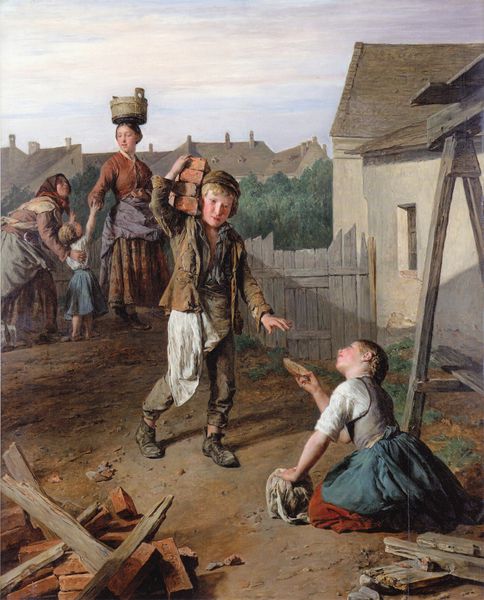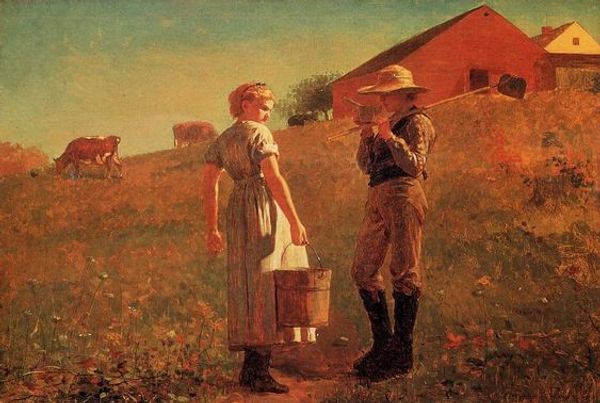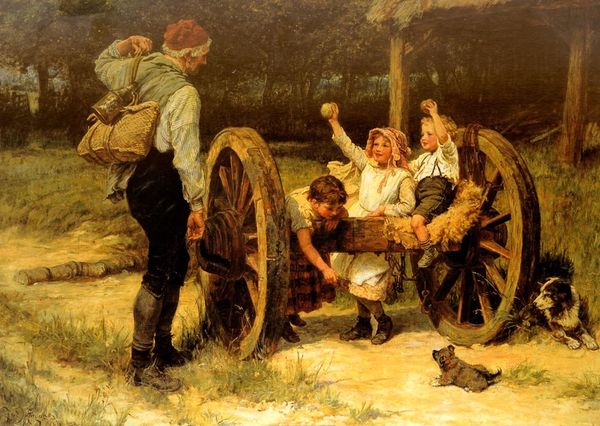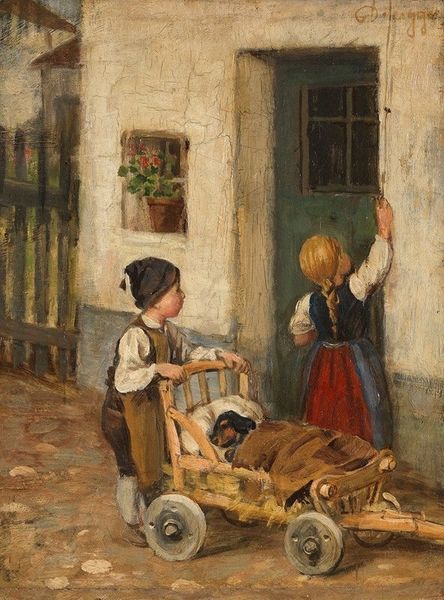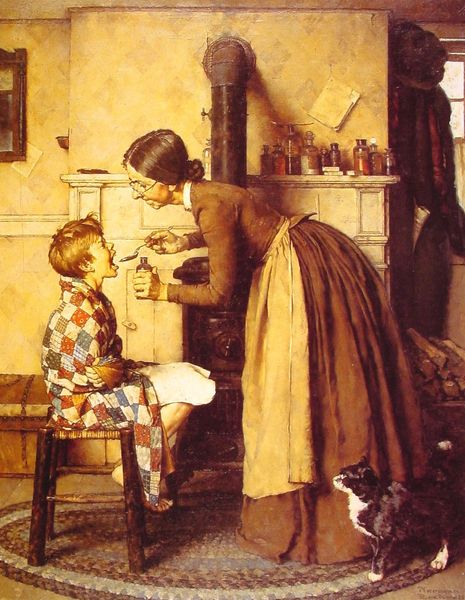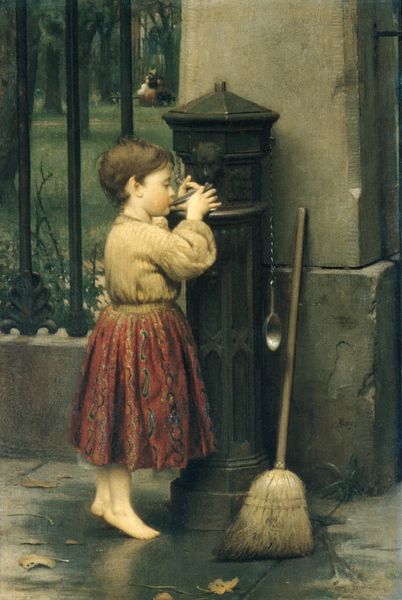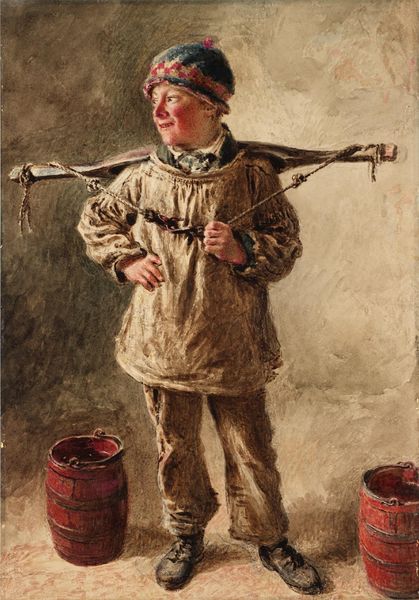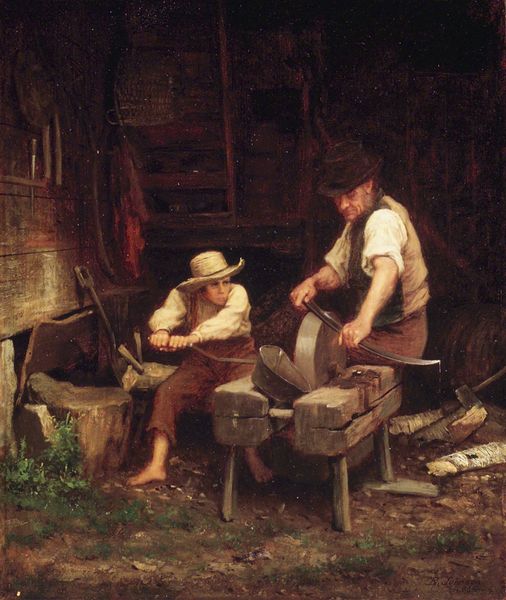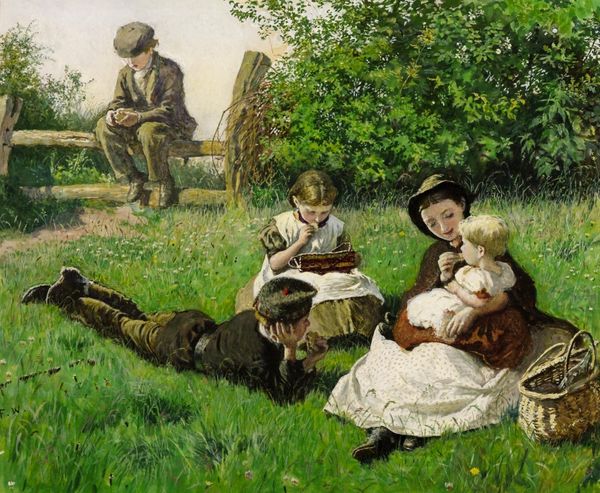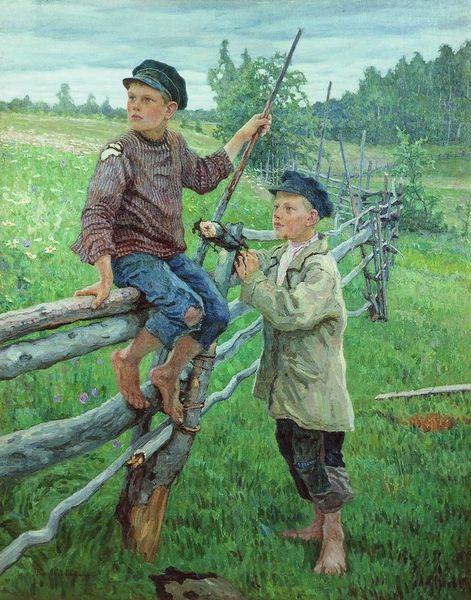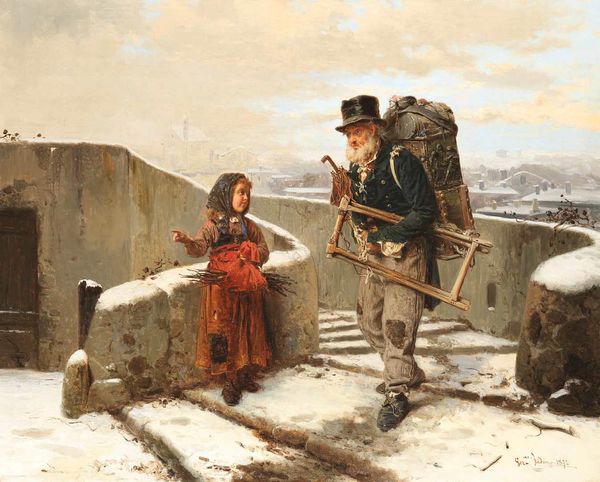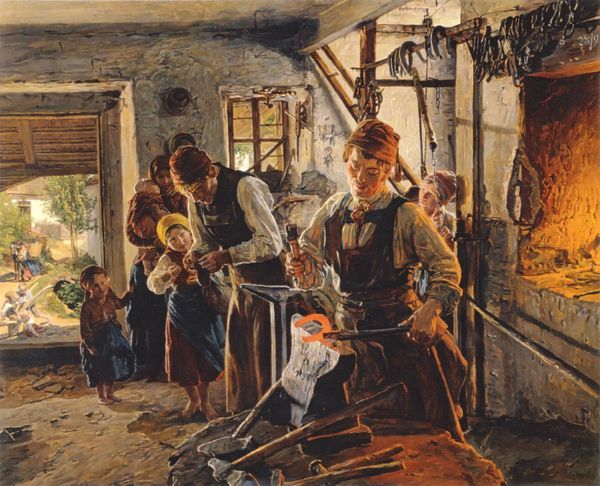
painting, oil-paint
#
portrait
#
narrative-art
#
painting
#
oil-paint
#
figuration
#
oil painting
#
genre-painting
#
realism
Copyright: Norman Rockwell,Fair Use
Curator: Look at the audacity in those barefooted scamps! Rockwell's capture is nothing short of genius; those aren’t just boys—they’re pure distilled Americana trickery. The light itself seems to conspire, doesn’t it, to make whitewashing look like a positively holy endeavor? Editor: Rockwell's "Tom Sawyer (Whitewashing the Fence)," created in 1936, clearly portrays a narrative embedded within the historical and cultural landscape of America. He uses oil on canvas to portray this idyllic—albeit slightly mischievous—scene, reflecting on boyhood, work, and play. Immediately, the work invokes a very particular sense of nostalgic Americana for me. Curator: Oh, but you hit the nail on the head—mischief! Just look at that little whelp bribing his friend with an apple, turning punishment into privilege, it is absolutely brilliant! One touch of whitewash, and you might as well be holding a master’s degree; that fence turns the whole world upside down. And it is really impressive if we consider that he managed to weave an entire world in such a simple composition of children playing. Editor: And what's fascinating to consider here is how Rockwell uses genre painting as a mirror reflecting societal values around work and leisure, particularly during the Great Depression, perhaps as some kind of idealized version. We must not forget the cultural framework that shaped the popularity and the significance of Rockwell's illustration within American identity at that moment. Curator: But think of the psychology, the simple genius of flipping the script! The painting itself isn't just documentation, it practically teaches a seminar in subtle, kid-flavored rebellion, if you catch my drift. You would swear you could almost see yourself somewhere there, a small country neighborhood from another world. Editor: The painting absolutely holds space in collective memory—carefully constructed by institutions that validate certain visions and exclude others. The narrative promoted by the Art market that embraced him might leave out relevant discourse concerning socio-political issues within American society in 1936. Curator: You know, seeing them work, and trick, with such lighthearted determination almost makes you wish you had a fence to whitewash yourself! Maybe if somebody would just let me trade this old art critic’s lens for a bite of that apple! Editor: Perhaps Rockwell helps us see—sometimes in overly romantic ways—how work, when viewed through the eyes of children, can become an imaginative landscape itself. Food for thought on how we can reconsider our everyday structures and tasks.
Comments
No comments
Be the first to comment and join the conversation on the ultimate creative platform.

